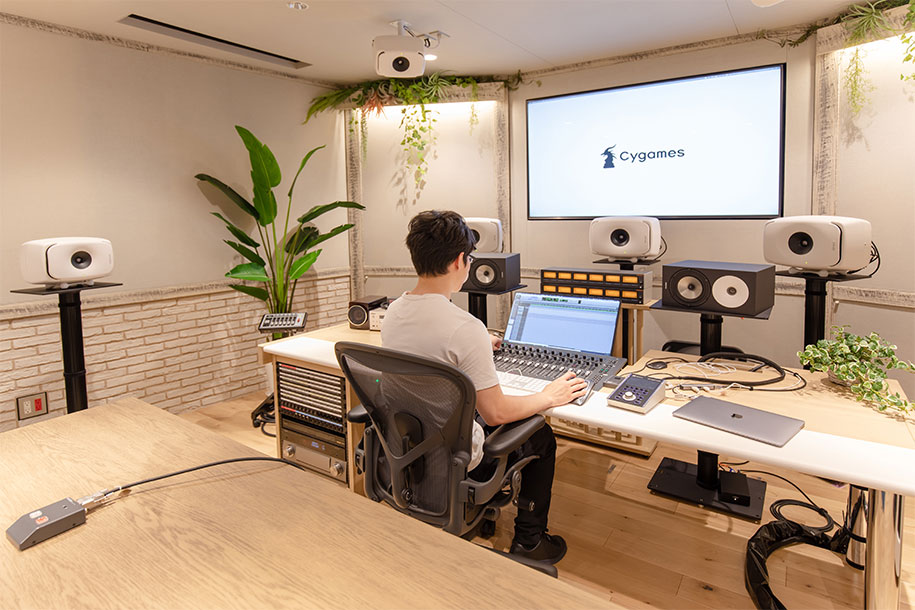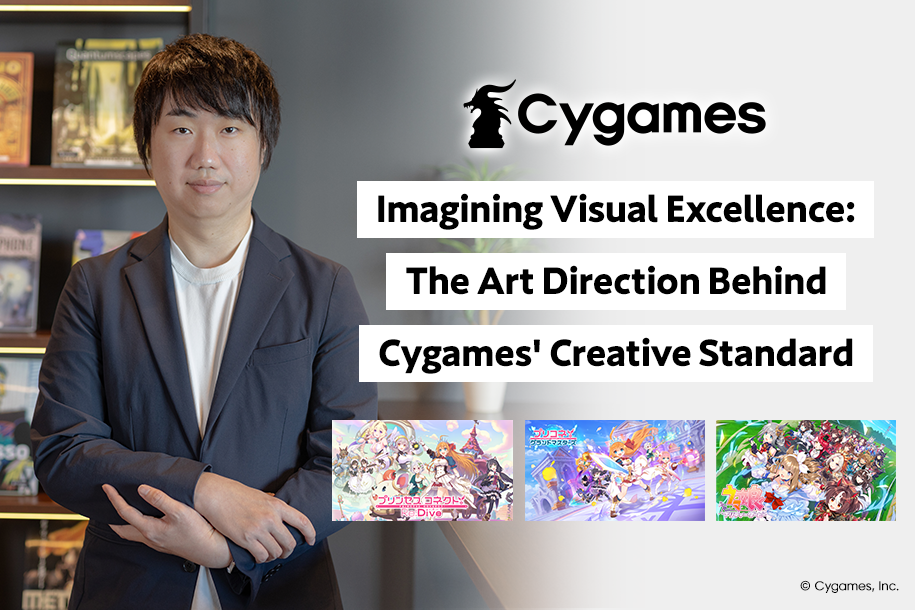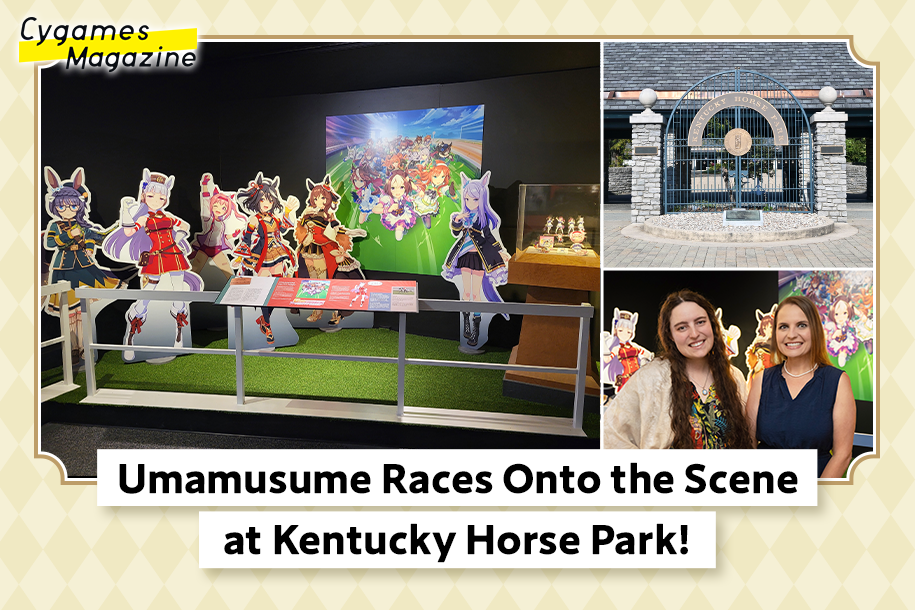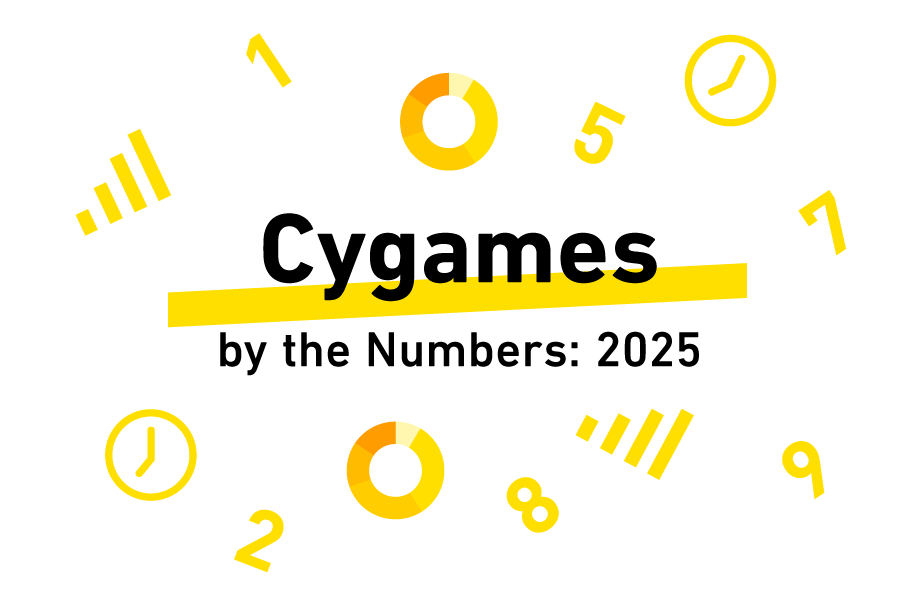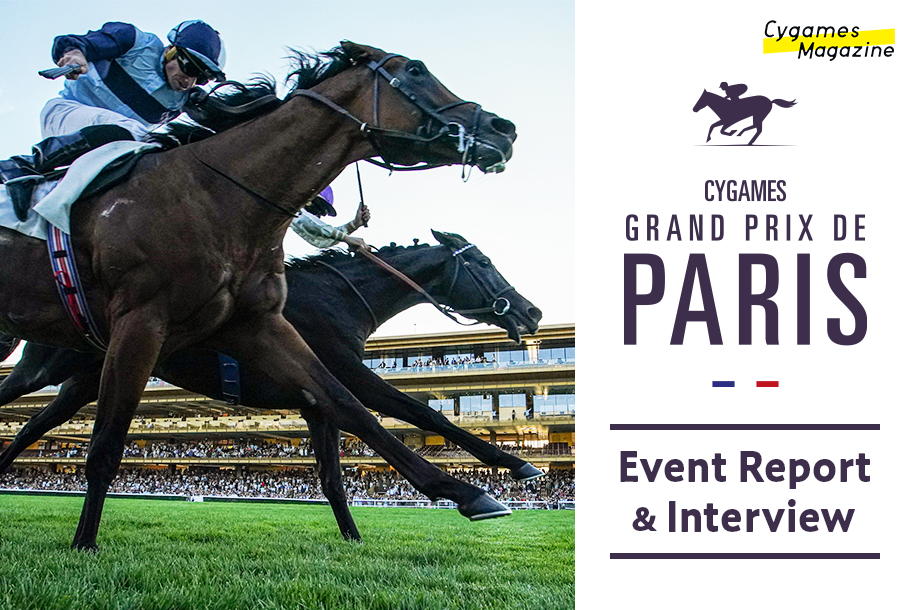How Sound Creation Links Granblue Fantasy: Relink—The Magic of Foley and Field Recording
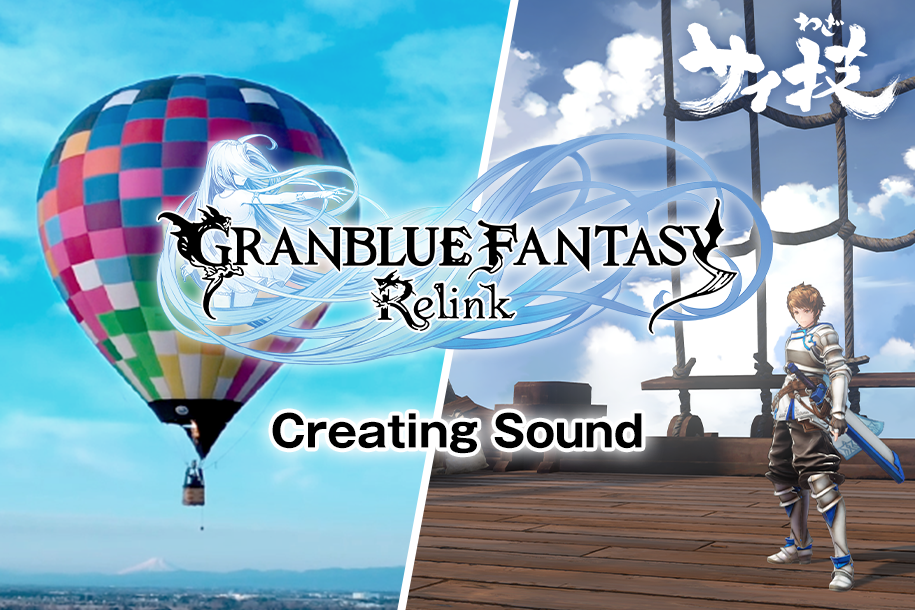
Sound plays a crucial role in enhancing a player’s immersion in video games via music, sound effects, and voice acting. Granblue Fantasy: Relink (“Relink”) sold one million copies globally within the first two weeks of its February 2024 launch. To fully transform Granblue Fantasy (“Granblue”) into a 3D action game, significant effort went into developing a soundscape that augmented the world of Granblue and added more depth to already deep characters.
In this article, two members of the Relink sound design team discuss two methods of sound creation—Foley and field recording—while sharing various insights and anecdotes about their work!
*This article contains game spoilers.
*The volume of certain sounds in this article has been adjusted for easier listening.
*We recommend using headphones for the best listening experience.
- Sound Design Team
Assistant Manager / Lead Sound DesignerTakuma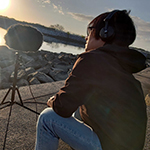
- Joined Cygames in 2019 having worked as a sound designer for console games. Lead sound designer for battles in Relink. Became an assistant manager for the sound design team in 2024.
- Sound Design Team
Lead Sound DesignerMasataka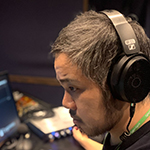
- Joined Cygames in 2019 having worked as a sound designer for action games. In charge of creating sounds for cutscenes while acting as lead for the sound design team.
Sound:
A driving force for immersion
What role does sound play in video games?
Takuma: Sound is one component that brings a game world to life, and it’s especially good at stimulating the player’s senses. Take wind strength, for example. From gentle breezes to raging gales, listening to distinct wind patterns conveys the vastness of the Sky Realm. Additionally, music becomes a part of storytelling as a tone setter. By letting the player hear things that match what they see, we can take their immersion to a new level.
Masataka: Music is often the emotional driver, guiding the player as to how they should feel in their current situation. Meanwhile, sound effects tend to have a narrower focus; they’re used to convey tangible sensations, such as pain from an enemy hit.
*Sound effects are audio cues that reflect an action. These include but are not limited to gun shots, weapon strikes, cars passing by, animal cries, blowing winds, and feedback from tapping a button.
Why kind of work does sound design entail?
Takuma: To put it simply, we create all the sounds found in a game, excluding music. We plan out what types of sounds the game calls for, then we record and edit them.
Masataka: For the first step in the process, we settled on what direction to take. These were the three key points we decided to go with:
- Create sounds that reveal each character’s identity and make them the star of the show.
- Create hyperrealistic sounds that complement every detail of characters and environments.
- Create sounds with impact that players want from an action game.
With these three points serving as our foundation, we next determined how to bring a character to life through the sounds of their gear and battle movements.

What was the team aiming for with Relink’s sound design?
Takuma: One of Relink’s big selling points is teaming up with allies in action-packed battles, all set in a Granblue world that’s been beautifully rendered from 2D to 3D. So we envisioned ourselves actually setting foot into that world in order to create sounds that express a character’s personality or the atmosphere of a scene.
Masataka: Going from a smartphone game to a console game opened up a host of new things we could do with sound. We utilized two sound creation techniques, Foley and field recording, in order to make the best product possible. By taking full advantage of sounds recorded in the real world, the sounds in Relink would feel authentic yet unique at the same time.
Foley:
Giving texture to the world through objects and materials
Let’s discuss one of the sound creation techniques you mentioned: Foley. What is that exactly?
Takuma: Foley is the process of manipulating regular objects to create sounds that match what’s on screen. Let’s say we wanted to create footsteps or the sound of clothing rustling in battle. While watching a clip of that action, we’ll record ourselves actually walking or rubbing cloth together. Essentially, Foley is more than just making sound; it’s about “acting out” sound. Professionals in this field are called Foley artists, and we couldn’t have fully brought characters to life without their help.
Are there any Foley moments that have stuck with you?
Takuma: Developing characters’ footsteps heard in the game’s last dungeon, the Pillar of Vayoi, comes to mind. That request came with a lot of challenging directional notes. This is what the art director personally asked us for:
Because of Angra Mainyu and the Astral gate, this level is a warped amalgamation of metals, vegetation, buildings, and all sorts of other materials pulled from every surrounding island. Please create a sound profile that matches the mood of a decaying junk heap.
(Sound concept)
・As if the ground were layered with soft eggshells: crunchy, gravelly
・Somewhat starchy, like a candy-coating: crackly, crisp
Since the art director envisioned “constantly crushing eggshells underfoot,” the first thing we tried using was eggshells, but the sound they made when stepped on felt too flimsy. After much trial and error searching for a more robust crunch, we ultimately landed on bark chips (like the tree shavings used in gardening). Mixing bark chips with charcoal gave us the crunchy, crackly texture that’s found in the game.
Takuma: Next, I’ll go over a few more practical applications of Foley in Relink.
Foley Effects: Characters
1. Sandalphon
We wore heeled footwear to produce walking effects for Sandalphon and several female characters. We tested out different types of shoes as well as switching up how we walked in them in order to match each character’s disposition.
To simulate the thickness and weight of Sandalphon’s wings, we stuffed a leather bag with a cloak and shook it.
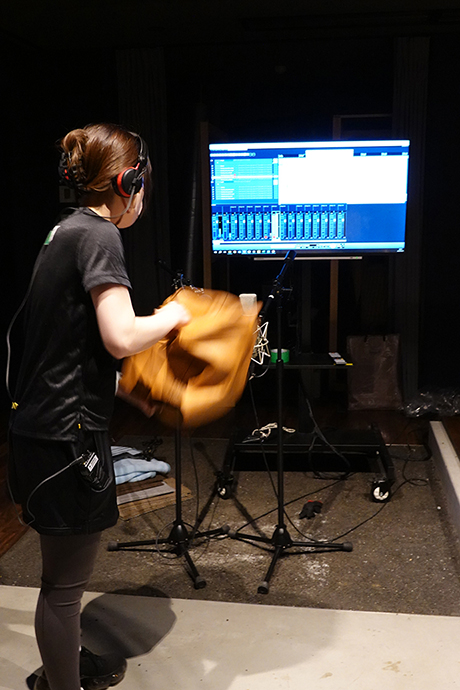
2. The Dragon Knights (Lancelot, Vane, Percival, Siegfried)
It’s actually possible to tell who’s walking by the sound of their footwear and the rhythm of their gait. That’s how we approached designing footstep sounds for the Dragon Knights.
Each knight is clad in armor, and their boots are made of metal. After trying out various regular boots and military boots, we ultimately discovered that ski boots made the sounds we were looking for. So the Foley artists strapped them on and acted as if they were the knights themselves.
3. Vaseraga
Vaseraga is a hulking Draph and veteran warrior. His armor needed to sound heavier and grittier than the knights’, so we filled a sturdy leather backpack with industrial clamps and shook it. The metal clamps scraping against each other combined with the overall weight of the backpack perfectly conveyed Vaseraga’s armor.
Takuma: Foley is a great tool for enhancing other aspects of the world too, which is why we used it liberally even outside of characters. I’d like to give two examples of how we used Foley to create nature effects.
Foley Effects: Environments
1. Lava/Magma
To create the sound of flowing, bubbling lava and magma, we filled a vinyl pool with a viscous slime-like liquid. Then we slapped, kneaded, and sloshed the slime to produce thick, goopy blorps. The liquid does gradually harden into a rubbery substance, so recording became a race against time.
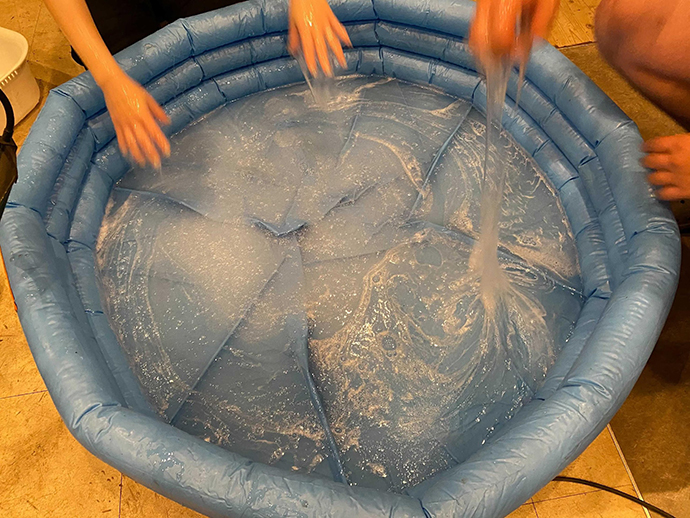
2. Water
To create satisfying splashes heard when characters or big enemies tread through puddles, we used a deeper pool than the one for magma sounds. Then an artist waded around in the water or used planks to stir up waves. As an added bonus, the vinyl walls of the pool helped absorb any unwanted reverberations, giving us crystal clear sound quality.
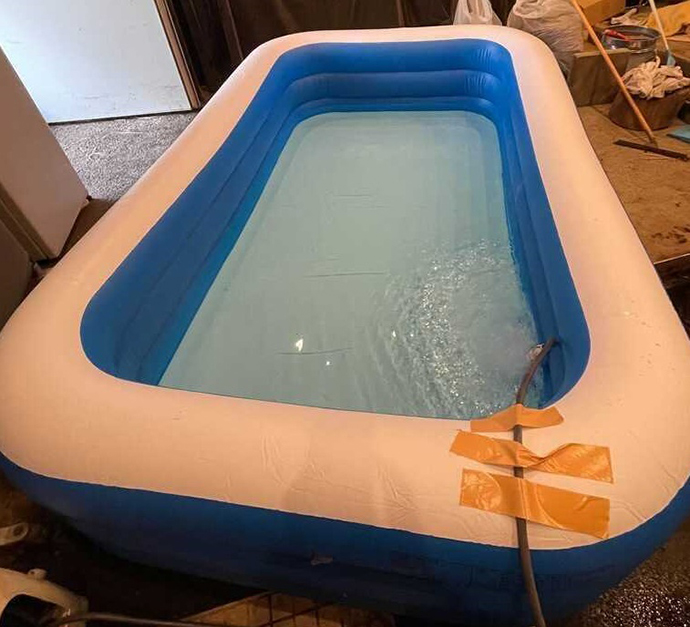
Field Recording:
Filling silence with reality
Can you tell us more about field recording, the other sound technique that was used?
Masataka: Field recording refers to recording sounds in non-studio environments. It’s often used to capture natural and manmade sounds like wind, rain, city traffic, and construction work for movies and TV shows. Since Relink takes place in the Sky Realm, we wanted to pay special attention to the sound of the wind, so we did field recordings in the mountains and other high-altitude locations.
In the Field for Field Recording
1. A thousand meters above the Earth
The winds you hear out on the Grandcypher’s deck or standing on the hills of Ainsteddo Archipelago are based on recordings captured from a hot-air balloon at an altitude of 1,000 meters. Wind speeds had to be below 4 meters per second for takeoff, and we could only go up in the morning or early evening because of rising air currents during the day. With that in mind, our day started at 4 a.m. as we packed up equipment and bundled up for the 6 a.m. balloon launching. Positioning the microphone was the toughest part. We ended up dangling the mic cable through a hole in the basket to avoid capturing the roaring fire of the balloon’s burner.

2. Recording in Makido Cave (Niimi Ciry, Okayama Prefecture)
The ambient sounds of Ainsteddo Archipelago’s and Skywyrm Valley’s rocky passages were also captured in the real world. We went to Makido Cave, which is located in Okayama Prefecture. It’s a limestone cave designated as a natural monument, and seeing as how it’s also a tourist attraction, we had to time our recordings when visitors were basically gone to avoid capturing their voices and footsteps. You can feel the cave’s tranquility and chilly atmosphere in the recordings, and the water drips in the background were a nice touch.
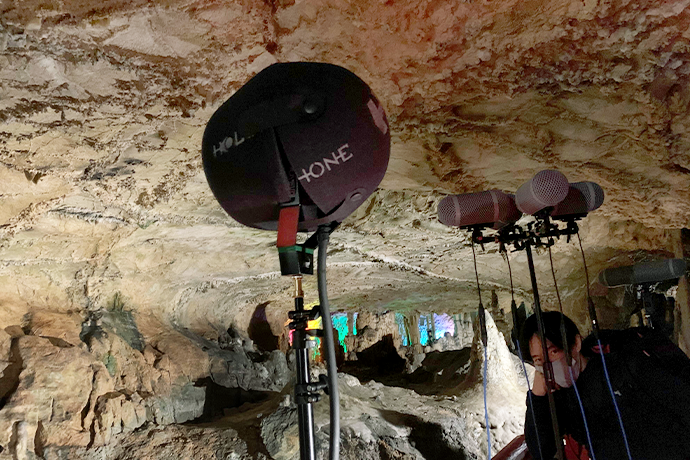
What was the field recording schedule like for Relink?
Masataka: Accounting for the seasons is a must when it comes to working in the field. Spring and summer is breeding season for birds, not to mention insects come out in droves. When the cicadas take over in the summer, their screams pretty much drown everything else out. That’s why we mostly recorded in the winter.
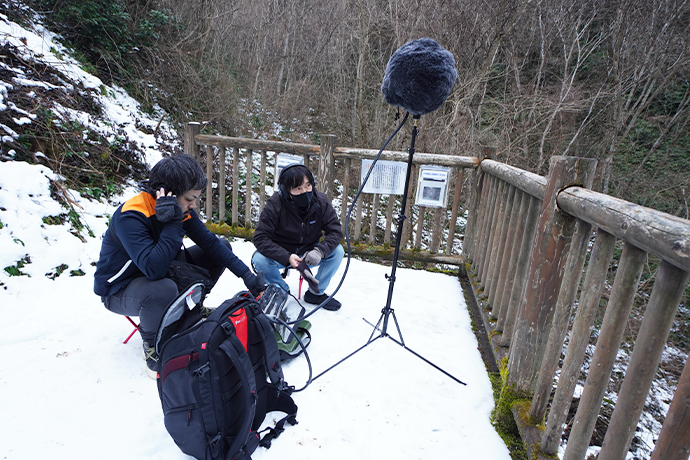
As for the hour at which we recorded, we tried to match the time of day presented in the game. Relink doesn’t have many nighttime set pieces, so daytime recordings were the norm.
What kind of equipment is used for recording?
Masataka: Microphones and recorders that capture 4.0- or 5.1-channel surround sound. Since we have to lug that stuff with us through mountains, we try to bring compact mic stands and lightweight camping gear.
*A channel is a lane that audio passes through. 4.0 channels means sound can be captured from four directions.

What is it like recording on location?
Masataka: Outdoor recording is fraught with background noise like jet engines, ship horns, and people’s voices. To ensure we have as much usable audio as possible, we record continuously for 30 minutes to 1 hour. During that entire time, our team waits on standby without making a single sound… You know, just a typical day on the job. Imagine having to stay absolutely still in the cold winter—in my opinion, field recording is a test of physical stamina. It’s a good way to improve your patience.
Keep Your Ears Open on Your Journey
What does it take to be a sound designer for video games?
Takuma: Sound design is about utilizing sound to invigorate a player’s auditory senses. It starts with questions like, “What should this game sound like?” Then it becomes a matter of how to make those sounds. For heavy footsteps, it took a lot of outside-the-box thinking to land on ski boots. But in the end, that’s how we were able to produce our ideal sound. It’s definitely a job that requires embracing trial and error with a can-do attitude.
Masataka: I believe having a passion for sound itself is valuable for any sound designer. As for myself, I’ve always been a fan of the music scene, but I’ve become fully focused on creating sound effects. If the concept of sound speaks to you, I’d say challenge yourself to make some noise.
In closing, how would you like players to experience the sounds of Relink?
Masataka: It’s easy to lose yourself in the frenetic battles and engaging banter between characters, but don’t forget to listen to the world around you when things are calm. I’m confident it will enhance your enjoyment of the story, so keep your ears open on your journey.
Takuma: There are many ways to enjoy video game audio, be it from your TV speakers, headphones, or a home theater setup. Although we designed Relink’s audio to sound amazing regardless of the output device, for players who want an even better listening experience, I recommend turning on 3D Audio mode. Strap on a pair of headphones and get immersed in surround sound. You’ll hear the difference compared to speakers, and your ears will thank you.
And that wraps up our glimpse into Relink’s sound development process.
Cygames continues to push the limits of game audio. As we pursue new techniques and methodologies in the field of sound, we look forward to showcasing our accomplishments in future titles!
Granblue Fantasy: Relink Official Website*Additional Support Provided By:
・AZSTOKE Co.,Ltd. Sarina Takeda (https://www.azstoke.jp/en)
・Niimi Commerce and Tourism Division (https://www.city.niimi.okayama.jp/kanko/pages/language/index.html)




